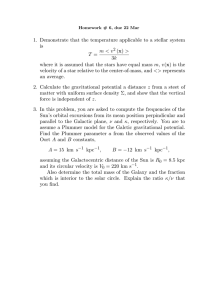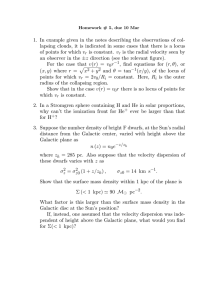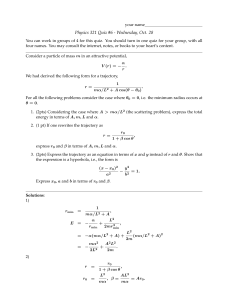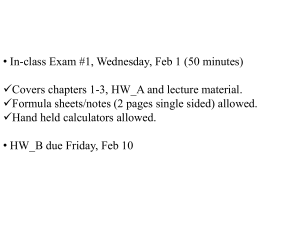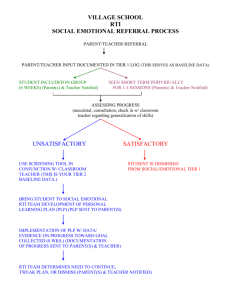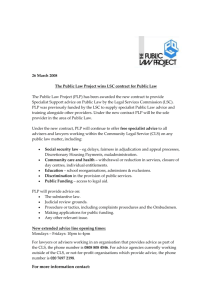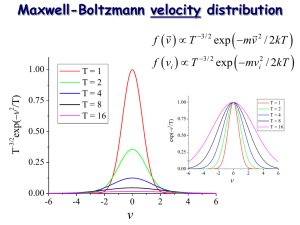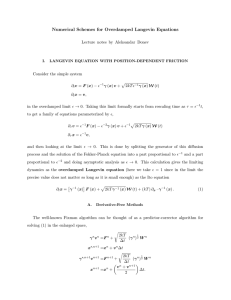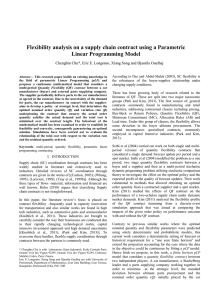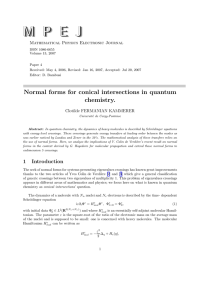Homework # 6 Solutions m < v (x) >
advertisement
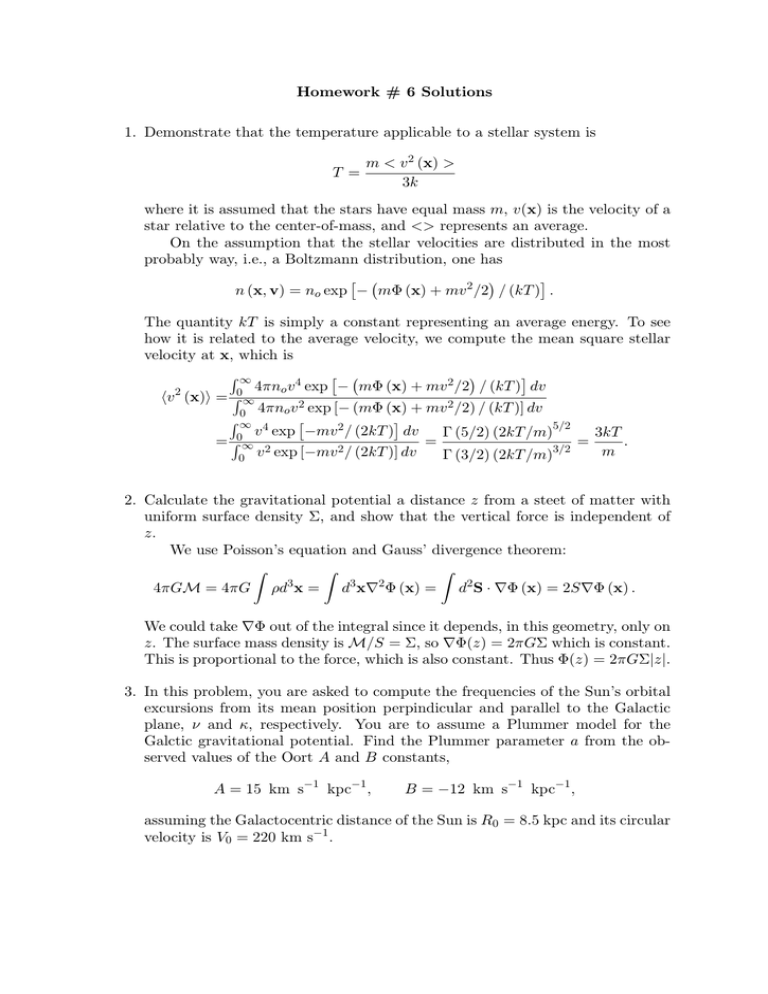
Homework # 6 Solutions 1. Demonstrate that the temperature applicable to a stellar system is T = m < v 2 (x) > 3k where it is assumed that the stars have equal mass m, v(x) is the velocity of a star relative to the center-of-mass, and <> represents an average. On the assumption that the stellar velocities are distributed in the most probably way, i.e., a Boltzmann distribution, one has n (x, v) = no exp − mΦ (x) + mv 2 /2 / (kT ) . The quantity kT is simply a constant representing an average energy. To see how it is related to the average velocity, we compute the mean square stellar velocity at x, which is R∞ 4πno v 4 exp − mΦ (x) + mv 2 /2 / (kT ) dv 2 0 hv (x)i = R ∞ 2 2 0 4πno v exp [− (mΦ (x) + mv /2) / (kT )] dv R∞ 4 v exp −mv 2 / (2kT ) dv Γ (5/2) (2kT /m)5/2 3kT 0 =R∞ 2 = . = 3/2 2 m Γ (3/2) (2kT /m) 0 v exp [−mv / (2kT )] dv 2. Calculate the gravitational potential a distance z from a steet of matter with uniform surface density Σ, and show that the vertical force is independent of z. We use Poisson’s equation and Gauss’ divergence theorem: Z Z Z 3 3 2 4πGM = 4πG ρd x = d x∇ Φ (x) = d2 S · ∇Φ (x) = 2S∇Φ (x) . We could take ∇Φ out of the integral since it depends, in this geometry, only on z. The surface mass density is M/S = Σ, so ∇Φ(z) = 2πGΣ which is constant. This is proportional to the force, which is also constant. Thus Φ(z) = 2πGΣ|z|. 3. In this problem, you are asked to compute the frequencies of the Sun’s orbital excursions from its mean position perpindicular and parallel to the Galactic plane, ν and κ, respectively. You are to assume a Plummer model for the Galctic gravitational potential. Find the Plummer parameter a from the observed values of the Oort A and B constants, A = 15 km s−1 kpc−1 , B = −12 km s−1 kpc−1 , assuming the Galactocentric distance of the Sun is R0 = 8.5 kpc and its circular velocity is V0 = 220 km s−1 . The Plummer potential and derivatives are: GM R ∂Φ , = 3/2 ∂R (r2 + a2 ) GM a2 − 2R2 GM a2 − 2z 2 ∂ 2Φ ∂ 2Φ = , = . 5/2 5/2 ∂R2 ∂z 2 (r2 + a2 ) (r2 + a2 ) Φ = −√ One has GM , r 2 + a2 and 2 ν = κ2 = ∂ 2Φ ∂z 2 ∂ 2Φ ∂R2 ∂Φ ∂R = Ω20 R0 R=R0 ,z=0 = R=R0 ,z=0 R=R0 ,z=0 GM a2 Ω20 a2 = 5/2 R02 + a2 R02 + a2 + 3Ω20 = Ω20 4a2 + R02 = −4BΩ0 . R02 + a2 p Using Ω0 = A − B we find a =p 7/20R0 . √ −4B(A − B) = 36 km s−1 kpc−1 and ν = Also, κ = −4BΩ0 = q p κa/ R02 + 4a2 = 7/48κ = 14 km s−1 kpc−1 . Also determine the total mass of the Galaxy and the fraction which is interior to the solar circle. Explain the ratio κ/ν that you find. The total mass M is 3/2 Ω20 R02 + a2 M= = 1.4 × 1011 M . G The fraction within the solar circle is 3/2 Z R0 M (R0 ) R03 20 3a2 r2 dr = = = ' 0.64. 5/2 3/2 M 27 0 (r2 + a2 ) R02 + a2 The ratio of κ/ν > 1 is opposite to what we would have found if we assumed the Galactic material was concentrated in the Galactic plane, in which case ν ' 2κ.
